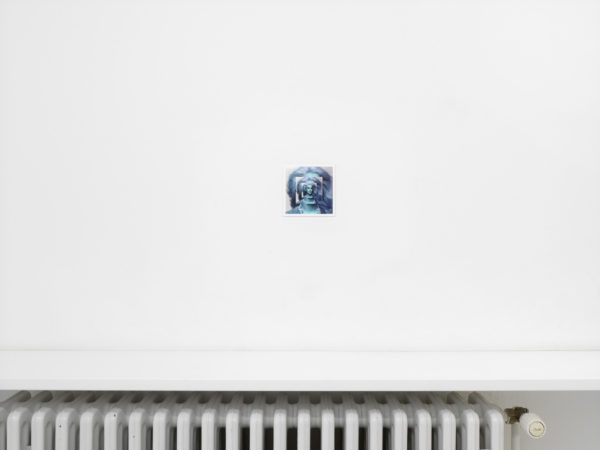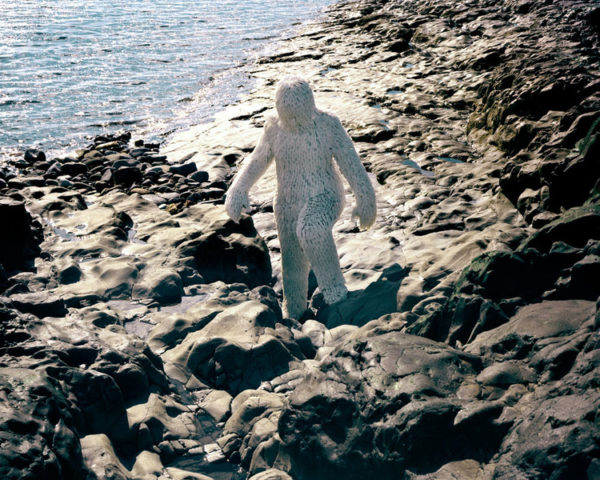





Lothar Hempel
Work from Working Girl.
“Tess McGill is an Irish-American working-class stockbroker’s secretary from Staten Island with a bachelor’s degree in Business from evening classes. She aspires to reach an executive position. Tricked by her boss into a date with his lascivious colleague, she gets into trouble by publicly insulting him and is reassigned as secretary to a new financial executive, Katharine Parker.
Emma Stern: “The works you are exhibiting this November in Dusseldorf are full of pictures of women that are known from movies. How should one behave opposite these faces and figures?”
Lothar Hempel: “I think movies are about setting bodies in motion in unusual ways. In my sculptures and paintings, the bodies are freed from their context and stopped in their movement. They stand there without their original motivation. Commercial interest in them is extinguished, desire is silenced. You could say they are exposed, naked and empty. They are in a mysterious condition which I like to call nature. I can look at them, like a landscape. Then they belong to me, becoming inner figures. That way I can reinstall them, as a possible projection plane and the starting point of a new story, a new orbit.”
Seemingly supportive, Katharine encourages Tess to share ideas. Tess suggests that a client, Trask Industries, should invest in radio to gain a foothold
in media. Katharine listens to the idea and says she’ll pass it through some people. Later, she says the idea wasn’t well received.
Emma Stern: “I don’t know if I can see that in the same way. For me, these figures are not freed, but cut or torn. You tend to emphasize the outline which in your work is always sharp, almost threatening. Lately, body elements that are usually on the inside are cut out, a lung or a heart, for example. At other times, words and text fragments overlap and dissect the bodies. What is happening there?”
Lothar Hempel: “The outline for me is actually an almost obsessive moment, to become blatantly clear, I cannot get enough of it. The outline is the threshold at which an image ends and the so-called reality begins – in my sculptures this becomes particularly apparent. Of course there is this insane desire that the image never ends and instead reality is occupied or eradicated. Then, the outline is a circle or a tilted eight, the infinity sign. But this would be the end, standstill and death. So I have to keep working against myself. Things have to stay in motion, only then sense arises.
Lately, a kind of x-ray vision into the figures developed increasingly. I want to not only retrieve the inner workings (Interiors), but also make audible the thoughts. The interior and the exterior must be made to speak simultaneously, so that images come to life. Because the individual work that I create may be a manifestation, but eventually it is also just a stopover on a larger cycle that moves further and that I want to be part of. I can give the pictures a direction, but at a certain point they develop a life of their own and you have to let them go.”
But when Katharine breaks her leg skiing in Europe, she asks Tess to house-sit. While at Katharine’s place, Tess discovers some meeting notes where Katharine plans to pass off the merger idea as her own. At home, Tess finds her boyfriend in bed with another woman. Disillusioned, she returns to Katharine’s apartment and begins her transformation.
Emma Stern: “Why the title Working Girl? Is that you?”
Lothar Hempel: “So many things resonate with this title – a romantic notion of working class liberation and emancipation. I like the sentimental and optimistic tone it has. Unfortunately I don’t think I am that myself, I feel too alienated for that, but perhaps it expresses a kind of longing, a desire to belong. The movie of the same title is about transformation and about what really matters to people and that is what has always interested me. I believe that we have no nature as such, but develop in and through art – so we’re really the product of ourselves. Here, too, “Working Girl” fits – it transports this idea of tireless and vigorous pursuit, even if the outcome is completely unclear. Isn’t that what’s beautiful about it?”” – Sies + Höke












































